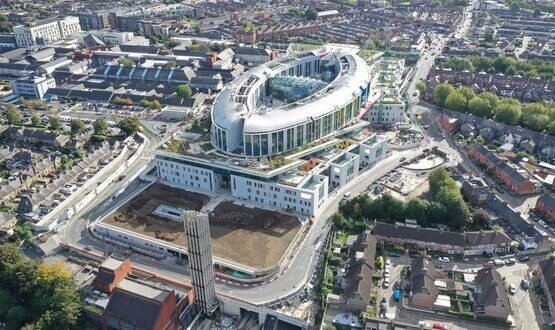Waiting to connect
- 8 February 2005
The project to enable electronic transfer of GP records in England is to begin testing early this year. The National Programme for IT has pledged to deliver the functionality to support the GP2GP scheme in phase one release two of its programme which runs from January to December 2005. However, widespread take up will depend on a range of other factors, including how quickly large numbers of GP practices become linked to the national data spine. She added: "NPfIT are currently identifying early adopters and implementation planning is underway. Initially there will be a small number of implementations which will gradually build to wider and more rapid deployment." He says: "Practices are pleased with GPEX because they are able to see records in a short period of time rather than the weeks or months it could take before."
 Fiona Barr
Fiona Barr
GP2GP transfer has been close to the top of GPs’ wish lists for at least a decade. Dr Paul Cundy, chairman of the GPC’s IT sub-committee and senior clinical lead on the project, believes that a workable solution is in sight. He says: "We’re aiming to have something around by the first quarter of this year. I believe this will be very successful just like the quality and outcomes framework software QMAS, because the profession and NPfIT have worked on it together."
The three leading suppliers of GP systems, iSoft (formerly Torex), InPractice Systems and EMIS, are all involved in the development of the functionality.
Dr Mike Robinson, medical director of InPractice Systems, says work on the message definition has been completed and work is now focusing on coding and implementation. "We’re at the test phase of generating and receiving messages. We want to be sure that our implementation meets the requirements of the quality assurance that the national programme wants."
Dr Robinson says the system was demonstrated at the National Vision Users’ Group conference in November. "Our users have been asking for this for at least 10 years and this is a real deliverable that that they would like. This is our fourth attempt to do this over the years and we want to make it happen."
Dr Robinson blamed poor implementation plans for the failure of previous attempts at GP2GP transfer.
He adds: "I remain to be convinced that there is a good implementation plan this time. There is a lot of water to go under the bridge before there are enough practices to make it work."
He points out that although the GP suppliers may be close to producing a workable solution for the messaging system, the data extracted for GP2GP transfer goes via the spine to new practices and is therefore dependent on how many practices are spine-enabled with single log on access via smartcards.
Dr Robinson says: "GP2GP transfer of records is just another service in that scenario and its going to be limited by PCTs and LSPs deciding which practices will move when."
Dr Robinson says the message provides for all the data in the record to be transferred. He adds: "Most of the GP systems will render the record in the same way that it was generated in the first place without any significant data loss. There might be loss of the structure but I don’t think there should be any data loss. Remember at the moment there is no transfer of data so 98 per cent will be a fantastic improvement."
Sean Riddell, deputy managing director of EMIS, is also doubtful about GP2GP transfer becoming widespread this year. He says: "The technical transfer of the record is relatively straightforward but GP2GP transfer is also dependent on so many other aspects of the National Programme. "
Although most of the work on the messaging system has been done doctors are still deciding what should happen in cases where a patient moves to another practice and then returns to their original practice, for instance in the case of university students.
Dr Cundy says: "We still need to make a decision about returning records, that is do you have the original record or the new one. We have been asked to decide between one or two scenarios but we are very close to doing that."
A spokesperson for the NPfIT said interoperability testing between existing system suppliers will begin during the early part of 2005 along with compliance and end-to-end testing.
In Scotland around 20 per cent of practices are already able to send and receive patient records electronically using a system called GPEX from the Scottish GP computer supplier GPASS. A total of 229 practices including three non-GPASS sites have GPEX installed and the system is currently being rolled out by local health boards.
The GPEX system passes the entire record via NHS Scotland’s Practitioner Services Division to the new practice.
Bob Stoakes, head of communications at GPASS, says the GPEX system works in two ways. Firstly it provides a viewer which enables practices using any GP computer system to look at the records of new patients. The second element allows the record to be imported into a practice’s system and is available to GPASS practices.
Mr Stoakes says GPASS has had initial discussions with the National Programme for IT about how GPEX will work alongside GP2GP transfer of records.




